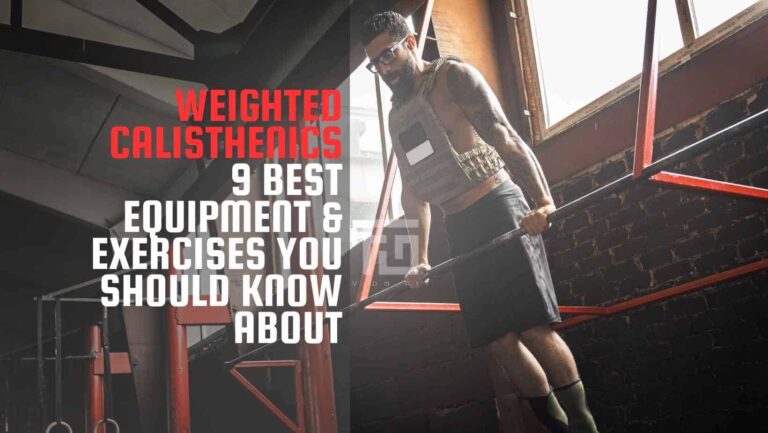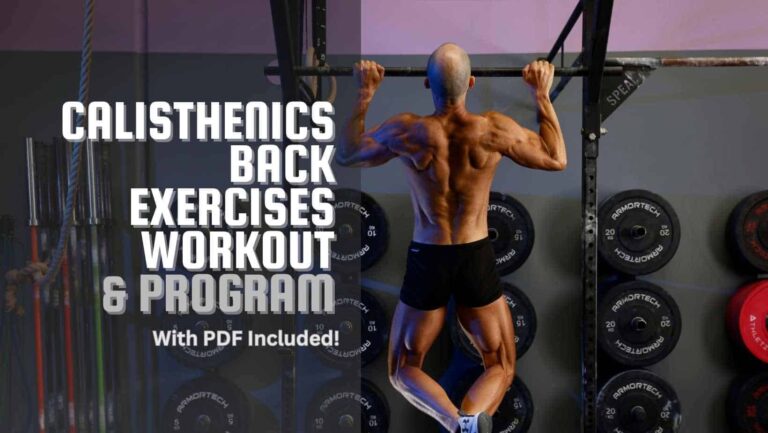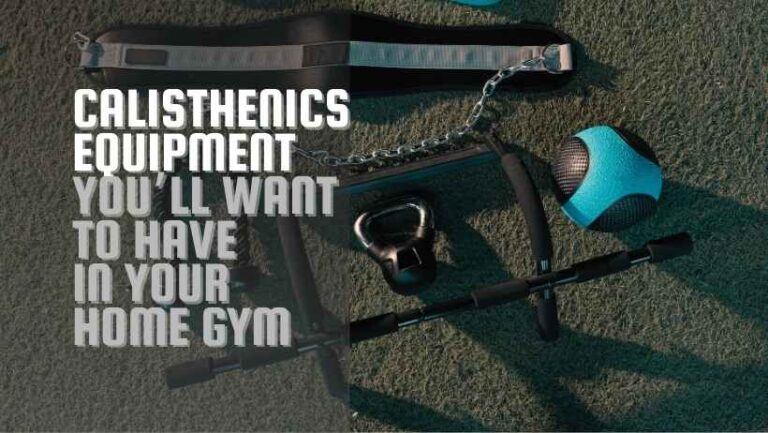10+ Calisthenics Disadvantages You Should Know | Is Bodyweight Training Right For You?

This article has been written in collaboration with Nilsu Nam, who graduated from college with a degree in Nutrition and Dietetics. She specializes in sports and weight loss nutrition.
As Calisthenics gains popularity in the ever-evolving fitness scene, it’s essential to recognize its advantages in utilizing body weight for strength and endurance.
However, exploring potential calisthenics disadvantages that enthusiasts might face is equally crucial.
Explore the flip side of the calisthenics coin and decide whether bodyweight training fits you!
Table of Contents
What Are The Disadvantages of Performing Calisthenics?
While this fitness approach brings a number of benefits, understanding its limitations is critical to a well-rounded fitness strategy.
Let’s examine the disadvantages of Calisthenics one by one!
1. It Is Not Optimal For BodyBuilding
Calisthenics and bodybuilding are different ways to exercise.
Bodybuilders use external weights and specific training routines, requiring the use of dumbbells, barbells, resistance bands, and more fancy and expensive machines like bench press machines and leg press machines, among many others.
Calisthenics relies on body weight exercises like push-ups, pull-ups, handstands, and other bodyweight exercises.
According to an article from the American College of Sports Medicine, bodybuilding might be better for building muscles, especially in older people.
It’s also important to note that there is a common public belief that bodybuilders use drugs to enhance performance and appearance. But in my opinion, this can also be the case in any sports or activiy, including Calisthenics. It is up to you to stay away from any performance-enhancing drug regardless of the sport or activity you participate in.
2. Adding Weight To Your Workout May Be Limited
Incorporating external weights in calisthenics workouts may face limitations due to the nature of bodyweight exercises.
Calisthenics primarily rely on one’s body weight for resistance training.
When compared to bodybuilding, adding weight to calisthenics may be limited to weighted vests, resistance bands, and dip belts.
You may progress in calisthenics if you incorporate some basic equipment in your workouts.
Have a look at my article: Calisthenics Equipment For Your Home Gym for guidance.
3. Most Exercises Are Compound Exercises
Calisthenics mainly focuses on exercises that use your body weight, working multiple muscle groups simultaneously.
And because of this, it lacks specific exercises that target individual muscles.
This situation might be challenging if you want to fix muscle imbalances.
For those in bodybuilding who aim for a specific appearance, there might be limitations to finding particular muscle-targeted exercises in Calisthenics.
4. Limited Options When It Comes To Isolate Some Muscle Groups
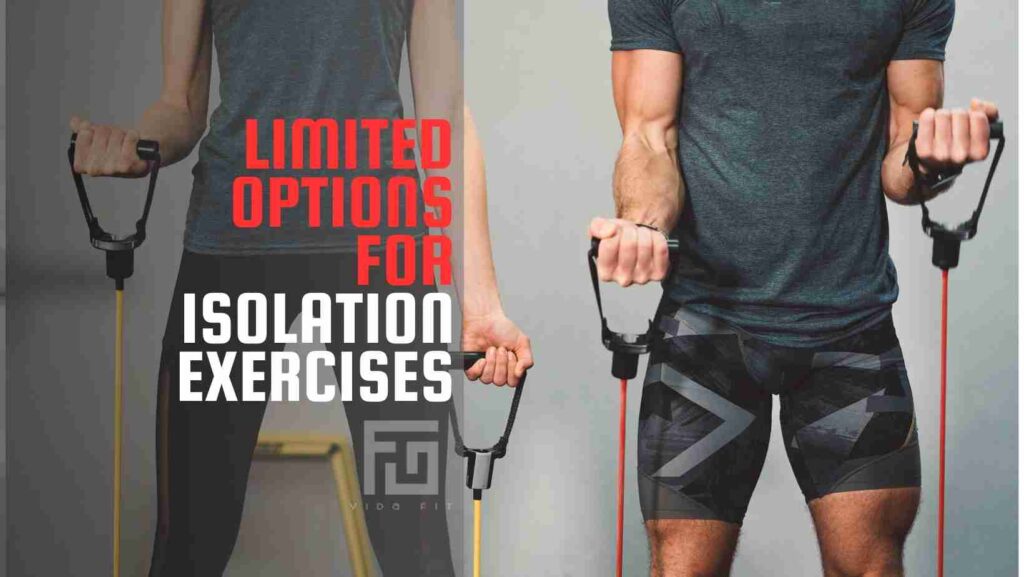
Targeting specific muscles in calisthenics can be challenging because most calisthenics exercises involve multiple muscle groups.
In a traditional weightlifting approach, you can use machines or free weights to target specific muscles.
Calisthenics movements like push-ups and pull-ups work many muscle groups at once; this is because, in Calisthenics, you need your muscles to work together for balance and strength.
Research shows these exercises make it challenging to single out and work on just one muscle group at a time.
5. Some Skills May Take A Lot Of Time To Master
Mastering Calisthenics takes time because of a few things:
1. Strength Development: Calisthenics skills require building up strength progressively.
2. Muscle Endurance: Some skills, like handstands, need your muscles to have the required endurance to hold this position for a while. It takes time to build up that kind of endurance.
3. Balance: Helps with complex calisthenics movements like pistol squats and lowers the chance of getting hurt. Practicing calisthenics may not only help with fancy movements but also with day-to-day life activities.
4. Flexibility and Mobility: Advanced calisthenics movements need you to be highly flexible. Achieving and maintaining optimal flexibility involves consistent practice and mobility exercises.
6. Poor Execution May Hurt You
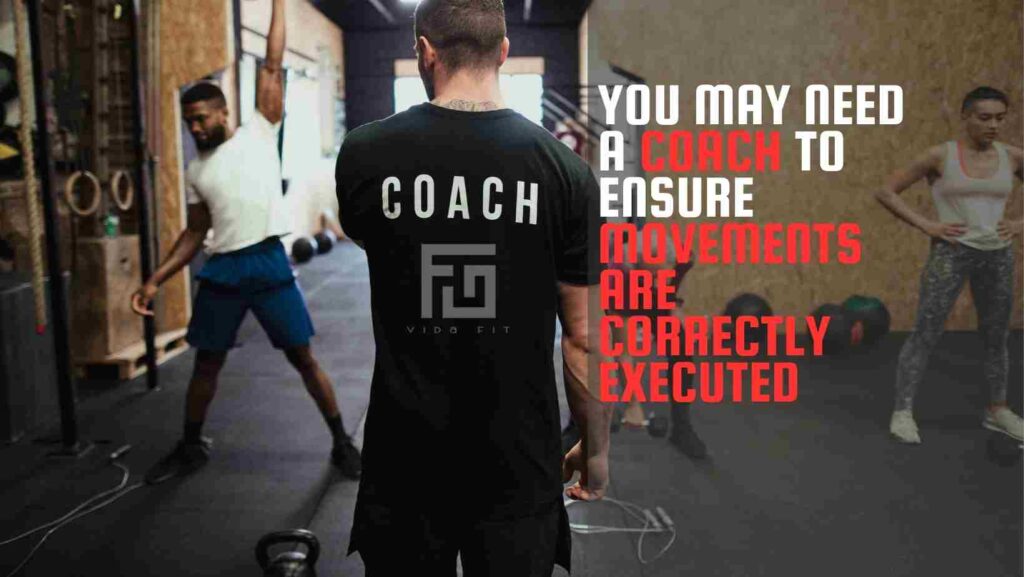
Poor execution in Calisthenics can harm you by:
- Increasing the risk of injury
- Causing muscle imbalance
- Reducing muscle activation
- Inhibiting skill development
This American College of Sports Medicine article explains that the risk of injury in Calisthenics may be influenced by overtraining, undertraining, and inadequate conditioning.
7. Less Lower Body Development If Not Following A Structured Plan
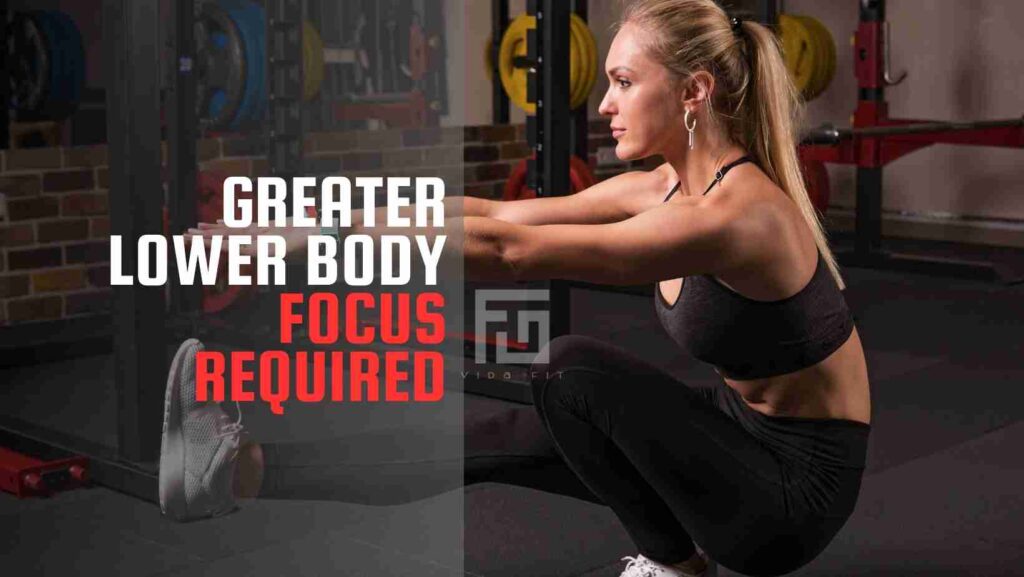
Without a structured training plan, individuals may experience less lower and upper body development due to:
- Missing important exercises
- Not training regularly
- Insufficient volume ( number of reps and sets) and intensity (how hard you train)
- A lack of progressive overload
- Incomplete muscle engagement due to poor form
- Poor exercise selection
- Inefficient recovery
A structured plan is essential for balanced and effective lower body strength and muscle development.
Read my article for a full leg workout: Top 10 Calisthenics Leg Exercises | Calisthenics Leg Workout To Build Strength and Muscle
8. It May Be Hard To Perform Certain Exercises If You Are Overweight
For overweight individuals, calisthenics can be challenging.
It puts more stress on your joints, makes it harder to move, and the strength-to-weight ratio isn’t excellent.
But it’s important to know that you can still make progress!
As a personal trainer, my critical strategies for overweight clients in Calisthenics include:
- Tailoring exercises to individual capabilities.
- Focusing on keeping joints healthy.
- Working on balance and coordination.
- Providing nutritional guidance.
- Conducting regular assessments.
- Maintaining an individualized approach.
9. Poor Execution May Lead To Muscle Imbalances And Asymmetry
Poor execution may overuse specific muscles while underutilizing others, reinforcing imbalances over time.
This hinders progress and increases the risk of injury.
Addressing poor execution through proper form and a structured training plan is crucial for preventing these issues and promoting overall fitness.
10. Loss of motivation and frustration.
Effectively managing demotivation is crucial to maintaining a positive mindset and consistent progress.
This approach enables individuals to be resilient to skill-building challenges, overcome training deficiencies, enjoy their workouts, and commit to a long-term, healthy fitness lifestyle.
In Calisthenics, demotivation is just a stepping stone!
Embrace challenges, set realistic goals, celebrate small wins, introduce variety, and surround yourself with positivity.
Every setback is a setup for a remarkable comeback.
Your journey is a testament to resilience—let it inspire others.
Keep pushing and stay dedicated.
You’ve got this!
FAQ On Calisthenics Disadvantages
Now, let’s look at some frequently asked questions!
1. What Are The Differences Between Weight Lifting and Bodyweight Training?
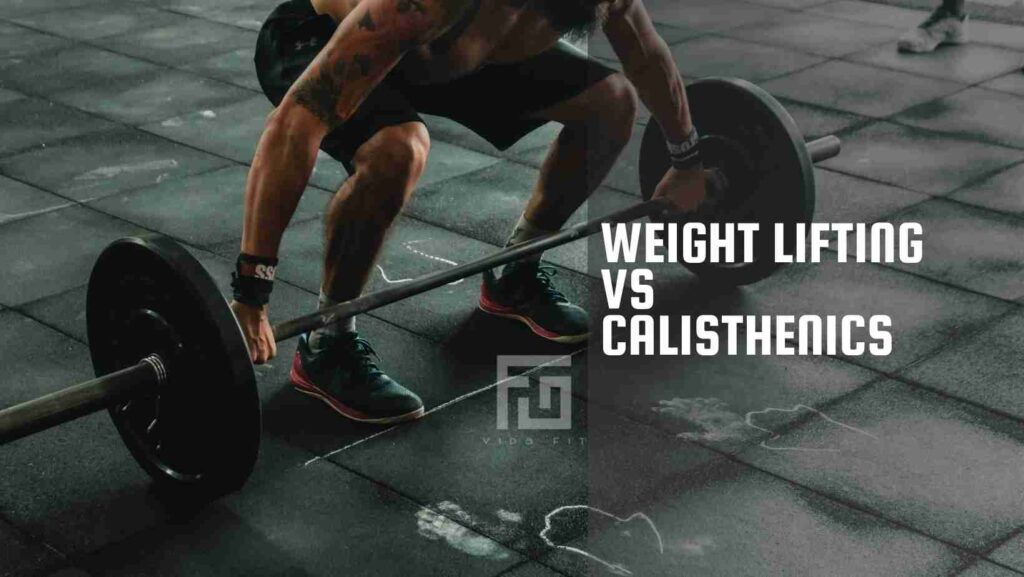
Let’s bring those who ask, ‘Is bodyweight training or weight lifting more optimal for me?’ here!
Bodyweight Training:
- Use your body weight for exercises like push-ups and squats.
- It works multiple muscles simultaneously, making it hard to focus on one.
- Progression is achieved by mastering more complex movements or increasing repetitions, utilizing the body’s weight.
- It focuses on mastering movement patterns and body control. Emphasizes functional strength, endurance, and flexibility.
Weight Lifting Training:
- It uses external weights, allowing you to focus on specific muscles.
- Progression often involves increasing the weight lifted, offering precise control over the resistance.
- Often associated with building muscle mass, strength, and power. May pose a higher risk of injury due to the use of external weights
2. Why Calisthenics Is Better Than Weight Lifting?
Both modalities offer unique benefits, making decisions based on personal preferences and goals.
While “better” is subjective and depends on individual goals, there are several reasons why some may consider calisthenics to have advantages over traditional weight training:
- Accessibility: Calisthenics requires minimal equipment and can be performed almost anywhere, from parks to your living room. In contrast, bodybuilding typically requires access to a variety of weights and machines found in a gym.
- Functional Strength: Calisthenics exercises often involve compound movements that engage multiple muscle groups simultaneously, mimicking real-world activities. This can lead to improved functional strength, balance, and coordination compared to the isolated movements common in bodybuilding.
- Mobility and Flexibility: Many calisthenics exercises incorporate a range of motion that can improve flexibility and mobility. Bodybuilding, especially if not paired with adequate stretching, can sometimes lead to decreased flexibility due to the focus on muscle hypertrophy.
- Lower Risk of Injury: Calisthenics tends to put less strain on the joints compared to lifting heavy weights in bodybuilding. With proper form, the risk of injury can be significantly lower.
- Cost-Effective: Calisthenics doesn’t require a gym membership or expensive equipment, making it more accessible and cost-effective for many people.
- Body Control and Awareness: Calisthenics practitioners often develop a high degree of body control and awareness, learning to perform complex movements and hold challenging positions.
- Aesthetic and Balanced Physique: While bodybuilding focuses on increasing muscle size, calisthenics tends to build a more proportional, athletic, and functional physique.
3. Can I Do Calisthenics And Weight Lifting At The Same Time?
Yes. Combining Calisthenics and weight lifting in your training routine is possible and practical!
Calisthenics, focusing on bodyweight exercises, complements weight lifting, and studies say this combination can strengthen your muscles, boost your endurance, and improve your fitness.
Integrating weight lifting and calisthenics gives you a complete workout.
So, combining Calisthenics and weight lifting is a smart choice for a complete strength training program!
4. Can HIIT Training And Calisthenics Work Together?
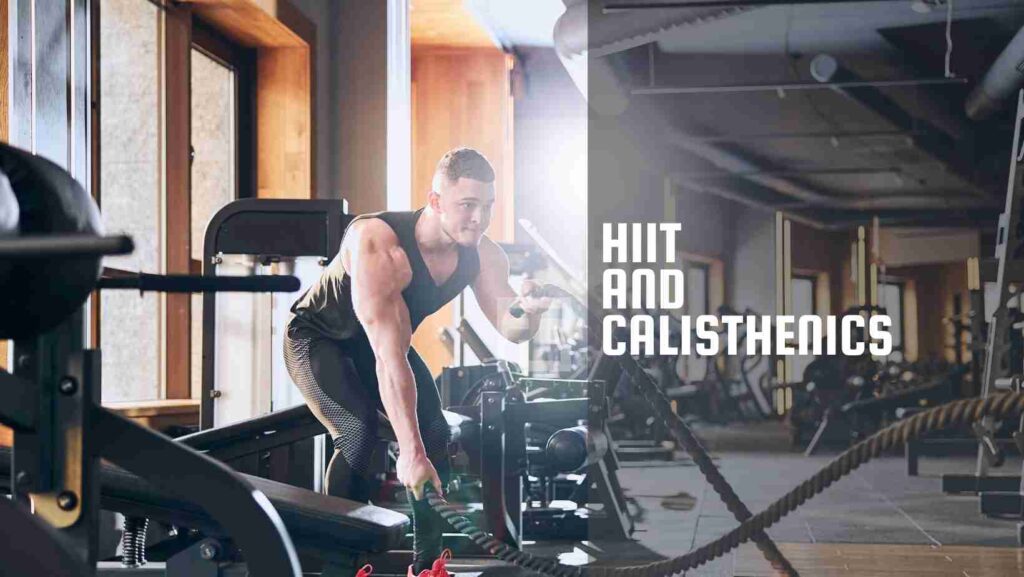
Doing High-Intensity Interval Training (HIIT) together with Calisthenics is a great idea!
Research indicates improved performance, body composition, and cardiovascular health.
Also, because Calisthenics mainly relies on a few types of movements, it could get boring over time.
Research suggests keeping workouts exciting and varied helps people stick to their routines.
5. Can I Mix Yoga And Calisthenics?
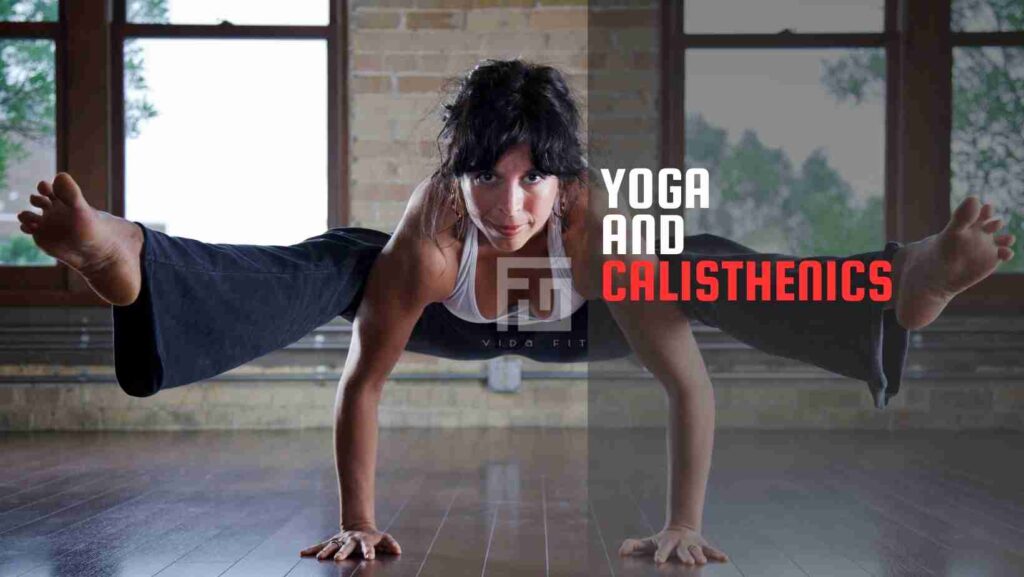
Absolutely!
Research shows this blend improves physical performance, mental health, and overall quality of life.
The mix offers a diverse range of exercises targeting strength, flexibility, balance, and mindfulness, providing a holistic approach to fitness.
Yoga’s focus on breathing and mental relaxation complements the strength exercises of Calisthenics.
Conclusion
While embracing the myriad benefits of Calisthenics, it’s crucial to acknowledge the potential challenges as stepping stones rather than obstacles.
These challenges include knowing how to navigate the differences with traditional bodybuilding practices, not using heavy weights, focusing on whole-body moves, and limitations in isolating muscle groups.
Getting good at calisthenics will take time, but keep in mind that every challenge is a way to learn and improve.


